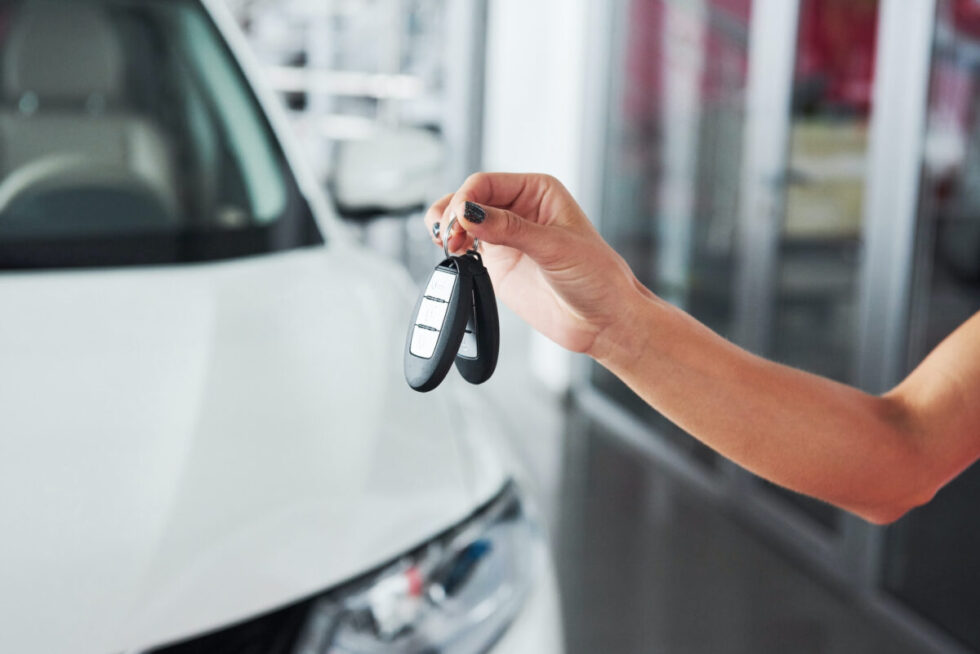What Happens At The End Of A Car Lease?

All good things must come to an end, and so do car leases. But what happens at the end of a car lease? Do you give it back or do you get to ride it into the sunset?
In this article, we will explore the end-of-lease options available to you and some tips for preparing for the end of the lease.
End-of-Lease Options
When your car lease ends, you typically have four options: returning the car, buying it, extending the lease, or starting a new one.
Returning The Car
If you choose to return the car at the end of the lease, you’ll need to prepare for the return. When you do, the dealer will inspect it for any excess mileage, wear and tear, or damage, which could result in additional fees and penalties. To avoid these charges, be proactive about maintenance and repairs throughout the lease term. Limit your driving to the agreed-upon mileage limit.
Buying The Car
If you’ve fallen in love with your leased car and want to keep it for the long term, you can decide to buy it at the end of the lease. Lease-end purchase options include lease purchase and hire purchase, which allow you to buy the car outright or finance the purchase over time. Buying the car can be a good option if you’ve taken good care of it and don’t want to deal with the hassle of finding a new ride.
Extending The Lease
If you’re not quite ready to part with your leased car but don’t want to commit to buying it, you can choose to extend the lease. Short-term extensions are typically more expensive but offer more flexibility. Long-term extensions can be more affordable but lock you into a longer commitment.
Starting A New Lease
If you decide to start a new lease after your current one ends, negotiate a good lease deal and read the fine print carefully. Leasing can be a great way to enjoy a new car every few years. However, you should understand the terms and conditions of the lease and ensure the deal is right for you.
Other Lease-End Options
In addition to traditional outcomes, there are other lease-end options available, such as trading in the car, selling it privately, or donating it to charity. However, these options may not be available or practical for everyone.
- Trading in. You can trade in your leased car at a dealership towards the purchase or lease of a new car. This can be a convenient option if you’re interested in a new vehicle and want to avoid the hassle of selling your leased car privately.
- Selling privately. You can also sell your leased car privately. This option can potentially yield a higher sale price, but it also requires more effort on your part to advertise the car, negotiate with potential buyers, and complete the sale.
- Donating to charity. If you don’t need the car anymore and want to do some good, you can consider donating it to a charity. This option can potentially provide a tax deduction and help support a good cause.
You should weigh the pros and cons of every option. For example, trading in the car may result in a lower sale price than selling it privately, while donating the car may not provide any financial return but give you the satisfaction of making the world a better place.

6 Tips For Preparing For The End Of The Lease
Preparing for the end of your car lease is essential to avoid any excess mileage, wear and tear, or other end-of-lease fees and penalties. Here are six tips on how to prepare for the end of the lease:
- Schedule a pre-return inspection. Many leasing companies offer pre-return inspections. This inspection will give you an opportunity to identify any damage that needs to be repaired before returning the vehicle.
- Clean the car. Cleaning your car is an essential part of preparing for the end of your lease. Clean the car thoroughly, both inside and out, and remove any personal items from the car. This will make the car look better, which might ultimately result in you not receiving additional wear and tear charges.
- Address any damage. If you notice any damage to the car, make sure to address it before the end of the lease. Repairing the damage can help you avoid fees and penalties.
- Document the condition of the car. Before returning the vehicle, document the condition of the car by taking photos of both the interior and exterior. This documentation can help you avoid any disputes with the leasing company over the car’s condition.
- Gather the car’s equipment. Make sure to gather the car’s equipment, such as the owner’s manual, spare tire, and jack. Returning the car without these items can result in fees and penalties.
- Review the lease agreement. Review your lease agreement to ensure you understand the terms and conditions of the lease, including any end-of-lease fees and penalties that may apply.
By following these tips, you can prepare for the end of your car lease and minimize the risk of excess mileage, wear and tear, and other fees and penalties. Remember, it’s important to take care of the car throughout the lease term to avoid any unexpected charges at the end of the lease.

Fees and Penalties
It’s vital to be aware of the common end-of-lease fees and penalties that may apply to your leased car. Therefore, we have prepared some additional details for you.
Excess Mileage Charges
Many leases come with a mileage limit. If you go over this limit, you may be charged an excess mileage fee at the end of the lease. To avoid this fee, it’s important to track your mileage throughout the lease term and limit your driving accordingly.
Excess Wear and Tear Fees
Your lease agreement may specify acceptable wear and tear levels for the vehicle. If the car has excessive wear and tear beyond what’s considered normal, you may be charged an excess wear and tear fee at the end of the lease. To avoid it, take good care of the car and address any damage as soon as possible.
Missed Return Deadlines
If you fail to return the car by the agreed-upon deadline, you may be charged a late fee or a penalty fee. To avoid it, simply return the car on time. Communicate with your leasing company if you need to make any changes to the return date.
Disposition Fees
Some leasing companies charge a disposition fee at the end of the lease. This fee covers the cost of cleaning and preparing the car for resale. It’s important to review your lease agreement to understand if this fee applies to your lease and how much it may be.
Final Words
When your car lease ends, you have several options to choose from, each with its pros and cons. Regardless of the option you pick, it’s vital to prepare for the end of the lease in advance. Clean your car, make necessary repairs, and document the condition. By doing so, you can minimize the risk of end-of-lease fees and penalties. With these tips in mind, you can make an informed decision about what to do when your car lease comes to an end and move forward with confidence.
FAQ
A: If you return your leased car with excessive wear and tear, you may be charged an excess wear and tear fee. This fee is designed to cover the cost of repairing any damage beyond normal wear and tear. To avoid this fee, take good care of the car throughout the lease term and address any damage as soon as possible.
A: Some end-of-lease fees and penalties may be negotiable, while others may not. Review your lease agreement and speak with your leasing company or dealership to understand your options and negotiate where possible.
A: Yes, you may be able to buy your leased car before the end of the lease term. This option is known as an early buyout or lease buyout. However, you’ll need to review your lease agreement and speak with your leasing company or dealership to understand the costs and requirements of an early buyout.
A: If you exceed your lease mileage limit, you may be charged an excess mileage fee at the end of the lease. Track your mileage throughout the lease term and limit your driving accordingly to avoid this fee.
A: Yes, you may be able to extend your lease beyond the original lease term. Short-term extensions can be more expensive but offer more flexibility, while long-term extensions can be more affordable but lock you into a longer commitment.



